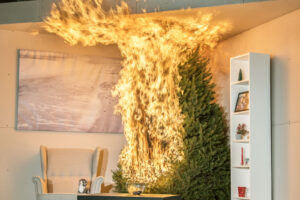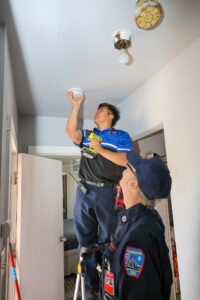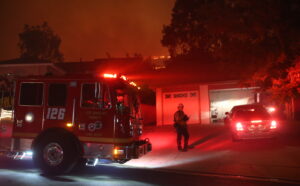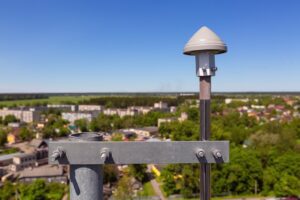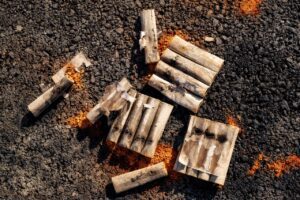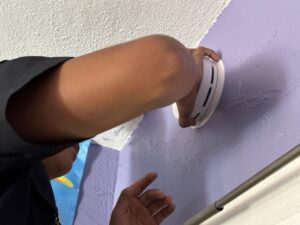It was supposed to be a fun sleep over party. Ten children gathered in a West Side Chicago home this past Sunday (10/26/18) to have fun, play, and spend the night. Several hours later, eight of the children, ages three months to 16 years were dead, and two others would die shortly thereafter, despite the efforts of doctors to save them. How did they die? Their home caught fire, and they were unable to escape.
I think about this type of horror show a lot. Our organization, MySafe:LA, a California non-profit public charity is actively involved in preventing this type of tragedy. As a life safety partner of the Los Angeles Fire Department for the past decade, one of our core missions is to identify at-risk homes and to install new, sealed ten-year smoke alarms, as well as CO detectors. We do this every week. And still, I worry about a tragedy like this.
During the past four years, we’ve distributed and installed more than 34,000 smoke alarms. In the process, we see every imaginable living situation — good and bad. We also see smiling, eager young faces, filled with excitement at seeing a fire engine, at being able to practice “Get low and go” with our public safety educators, and to recite back the key steps we teach about getting out of the house in the event of fire.
Chicago Fire has not determined a cause of the fire that killed ten children as of today, but they have determined there were no functional smoke alarms in the home that burned. We can teach kids and adults how to get out of a burning home until we have no voice left, but it won’t help if the people in the house don’t know it’s on fire.
Firefighters who entered the home noted that it did not appear any of the children attempted to escape. They likely died in their sleep, the result of poisonous smoke.
It’s why we created a trademarked slogan: Fire Burns, Smoke Kills™.
Multiple studies have shown that people double their chances of escaping a house fire if there are working smoke alarms in use. Even with smoke alarms, children are known to sleep through their blaring alerts, as their bodies are developing and they sleep deeply. That’s one reason why adults should never leave one or 20 children alone in a home, especially at night. Deadly house fires often occur when people are sleeping, or just waking early in the morning.
The most important thing to share is this: dying in a fire is nearly always preventable.
Do you have working smoke alarms?
How do you know they work?
If they chirp every few minutes, they are NOT working properly. The chirp means the alarm is asking for replacement batteries. These days, most modern smoke alarms are either hard wired, or have sealed ten-year batteries in them. Even so, you still need to learn how to use them: one button to test, and another to silence the alarm when it goes off.
And it isn’t just people without means that don’t have smoke alarms. We’ve been in many expensive homes, and they do have smoke alarms – 20 or even 30 years old. Most alarms don’t function properly after ten years, even if the little light remains on. And modern smoke alarms don’t have a light for that reason: it’s the age of the alarm that matters.
We often see smoke alarms disabled in people’s kitchens. Smoke alarms aren’t supposed to be in the kitchen. It’s where you cook. There’s smoke there.
Where do smoke alarms go?
The National Fire Protection Agency offers good information about smoke alarms. The NFPA states that every home should have a smoke alarm in the hallway leading to where people sleep or rest. Every hallway. On every floor.
There should be a functional smoke alarm in every room where people sleep.
Smoke alarms do not need to be in the kitchen, in the garage, or in bathrooms.
Smoke alarms should not be near the blades of a ceiling fan. Don’t place smoke alarms near doors, windows, or ducts where moving air may interfere with their operation.
They should be on the ceiling or within 12 inches of the ceiling when mounted on the wall.
If they chirp, as noted, replace the batteries.
If they’re more than nine years old, replace them.
MySafe:LA can help as well. If you live in the greater Los Angeles area, and your home doesn’t have functional smoke alarms, and you can’t afford them, we’ll provide them – in fact install them – all at no charge. That right – the service and the alarms are FREE.
Learn more about smoke alarms on our website: www.mysafela.org/smoke-alarms/
Besides smoke alarms, your family needs a plan – an escape plan. If you don’t have one, you can download one for free right now.
You learn how to create an escape plan by watching this short video about escaping fire on our website.
Once you’re outside, you’ll need to call 9-1-1. Another short video on our website will teach you what to say, so that first responders get there fast.
Because the information is free, the smoke alarms are free if you can’t afford them, and your Los Angeles Fire Department is fast when responding, there’s no reason to risk your life or the lives of your loved ones. Be FireSmart:LA and together, we’ll build a more resilient community.





